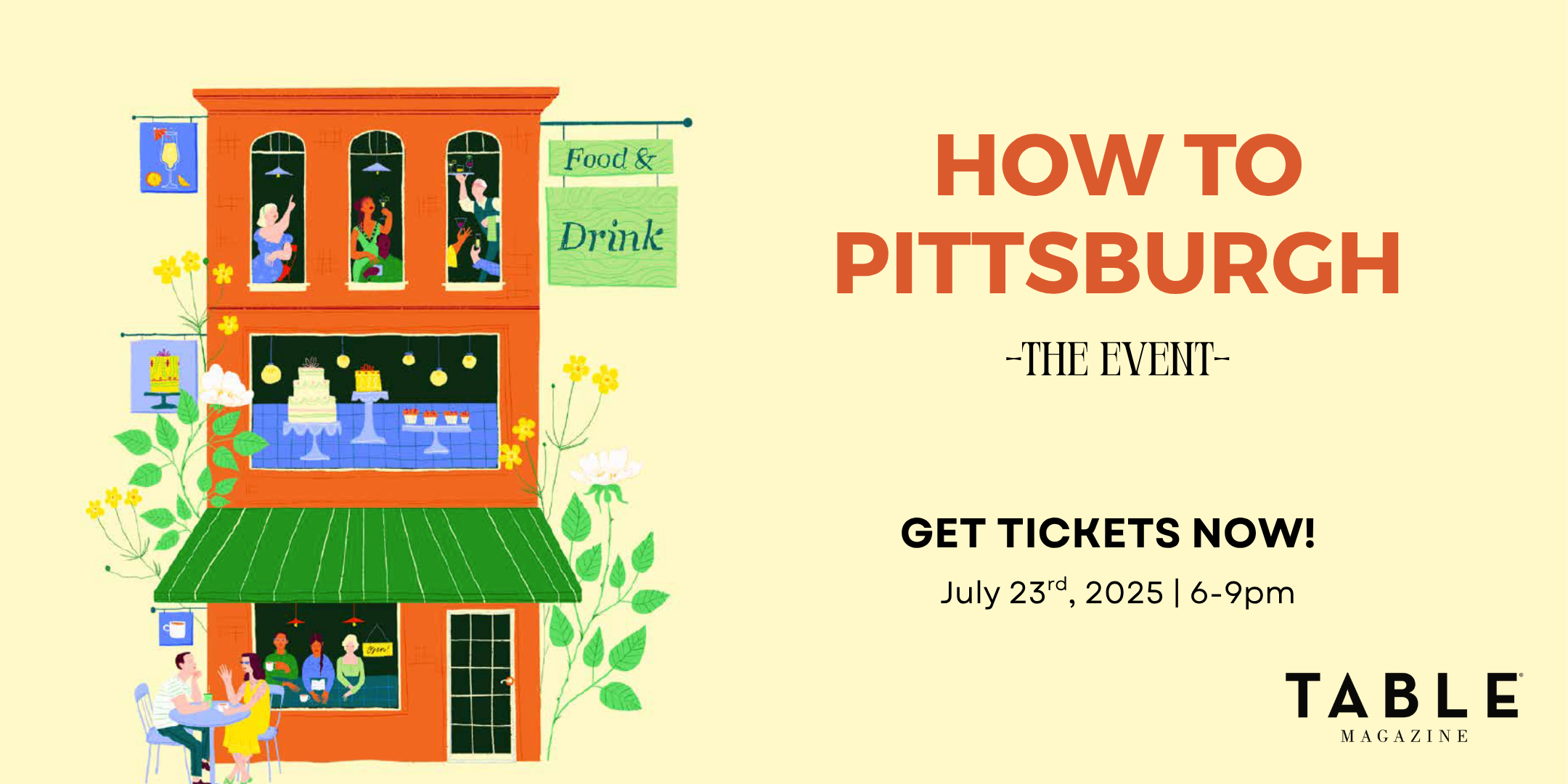Set decorator for such films as Crazy Rich Asians and TV shows such as Severance (for which he was nominated for an Emmy), interior designer and author Andrew Baseman shares his private collection of artfully repaired objects.
The Story of The Scarf
The official story begins, you could say, with a scarf. A young Andrew Baseman studied set and costume design at Carnegie Mellon and—one day in a vintage clothing store in Pittsburgh—purchased the first of what would become a large number of scarves. He would later go on to write a book, The Scarf, about his collection—and collecting in general.
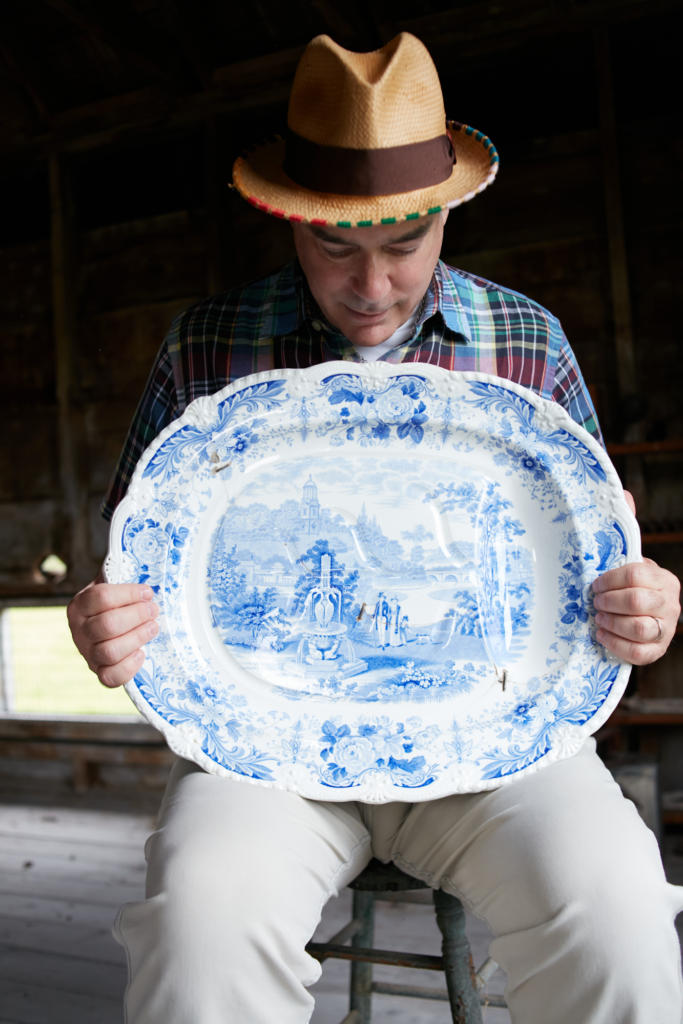
He continued to collect and over the years became focused on items—mostly ceramics and glassware—that were broken hundreds of years ago and repaired using various (and sometimes quite inventive) methods. Beyond mere gluing or other means intended to be invisible, the techniques include stapling and replacing broken-off parts with wood, rattan, metal, or other elements.
His obsession is chronicled on his website Past Imperfect: The Art of Inventive Repair. There you’ll find a large number of pieces from his collection, with photographs, descriptions, and backstories. Each item is followed by a picture of a similar piece unbroken and unrepaired. “Sometimes the repairs are so wacky, it’s hard to know what it would have looked like in perfect condition.”
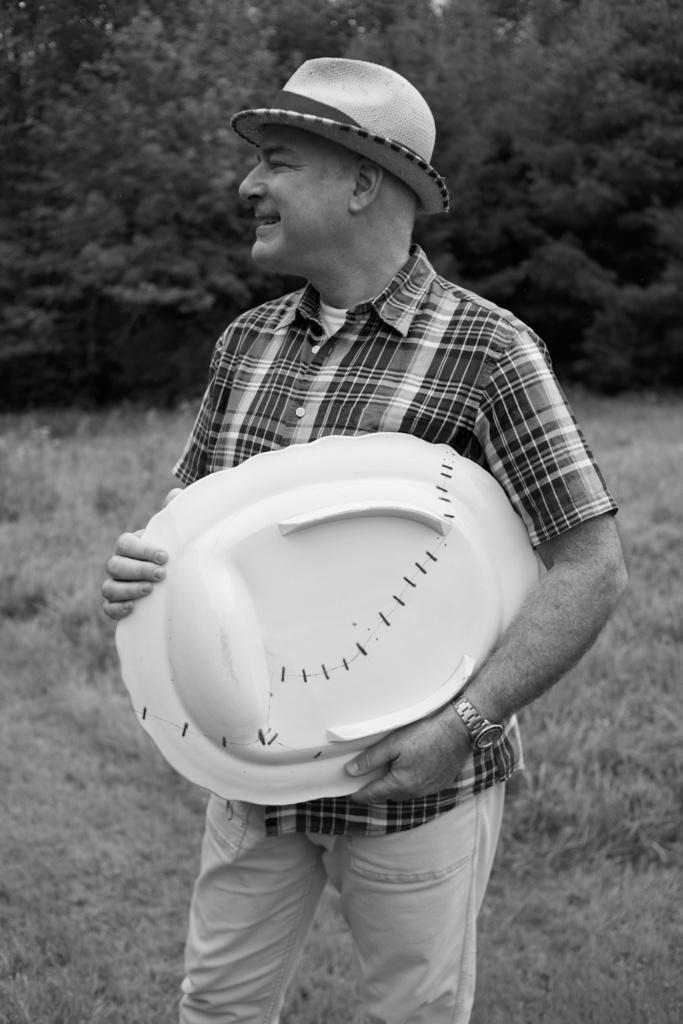
Reuse Through Repairs
Baseman points out that these repairs were not decorative—the object, now repaired, was put into use once more. Baseman was at Thanksgiving dinner at his husband’s uncle’s house a few years ago, and noticed that the turkey platter they used was stapled together—and they didn’t even know. “Here we are a couple of hundred years later and it’s still in use and still working. That’s pretty cool.” Stapling was a common technique for reattaching a break.
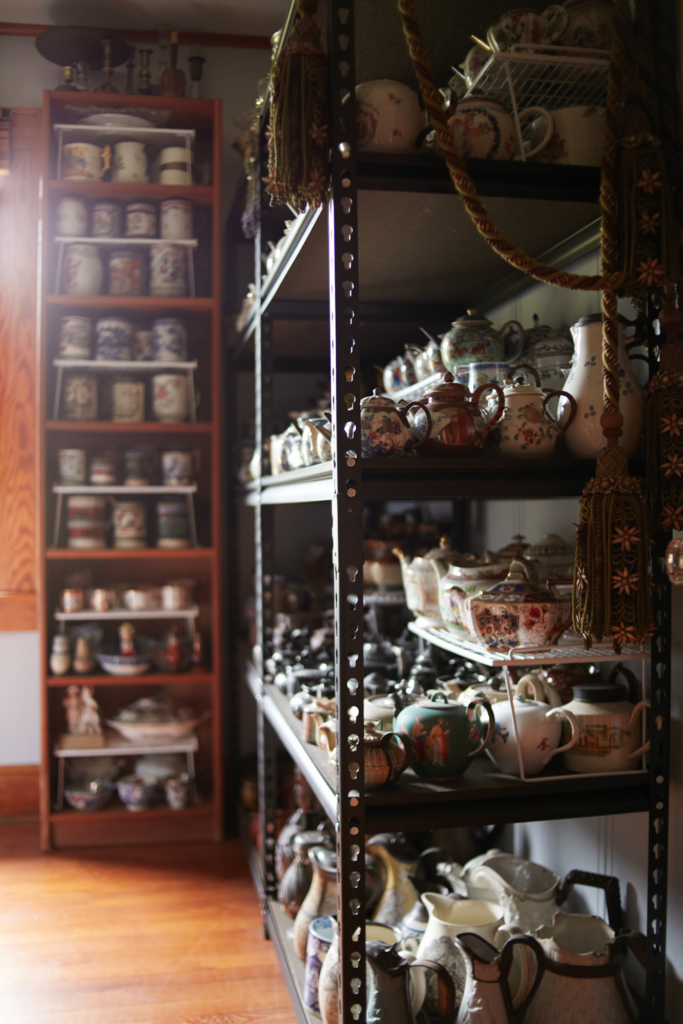
There appear to be two camps: people who see these items as “broken” and pass them by, and a second group, like Baseman, who are drawn to them. “When I go to an antique shop and see a perfect teapot, I don’t even think about it. [A repair] really adds another layer.”
Coming Back Together Again
How a piece was repaired depended on a number of factors. How it broke, of course, but also on the tradesmenavailable to do the work. A large pitcher in his collection was (probably) fixed by an itinerant tinsmith who, back in Victorian times, would travel from town to town, doing repairs. The “new” tin handle is not exactly what the original would have looked like. “This one’s a bit exaggerated, but it was all about making do.” As such, these pieces are often called “make-dos,” but it’s not Baseman’s preferred term, as it was originally somewhat derogatory, suggesting a lesser status or something folksy, rather than the beautiful works of art they are.
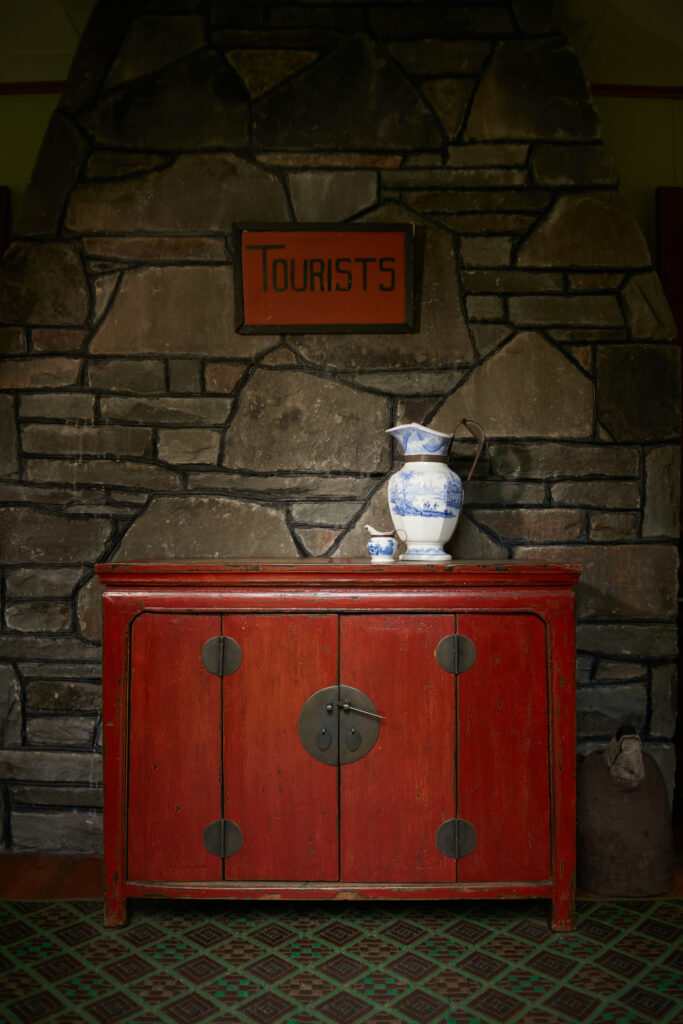
Collecting aside, he is most famous for his work in film and television, where he acts as a set decorator. When possible, he has incorporated make-dos into the set design, such as including a shelf of contemporary pieces made in Italy for the film Crazy Rich Asians.
Over the years, Baseman has amassed a variety of followers and fans from the antique dealer community, the ceramics community, and even New York shop owner extraordinaire John Derian. He finds that his younger, ceramics-oriented followers are particularly fascinated by the history and techniques of repaired pieces. “They all had broken pieces that they didn’t throw out. And so, then they would use some of the old techniques to repair them. There’s a little bit of a rebirth and it’s really taken off. That’s really cool.”
More From Andrew Baseman’s Collection
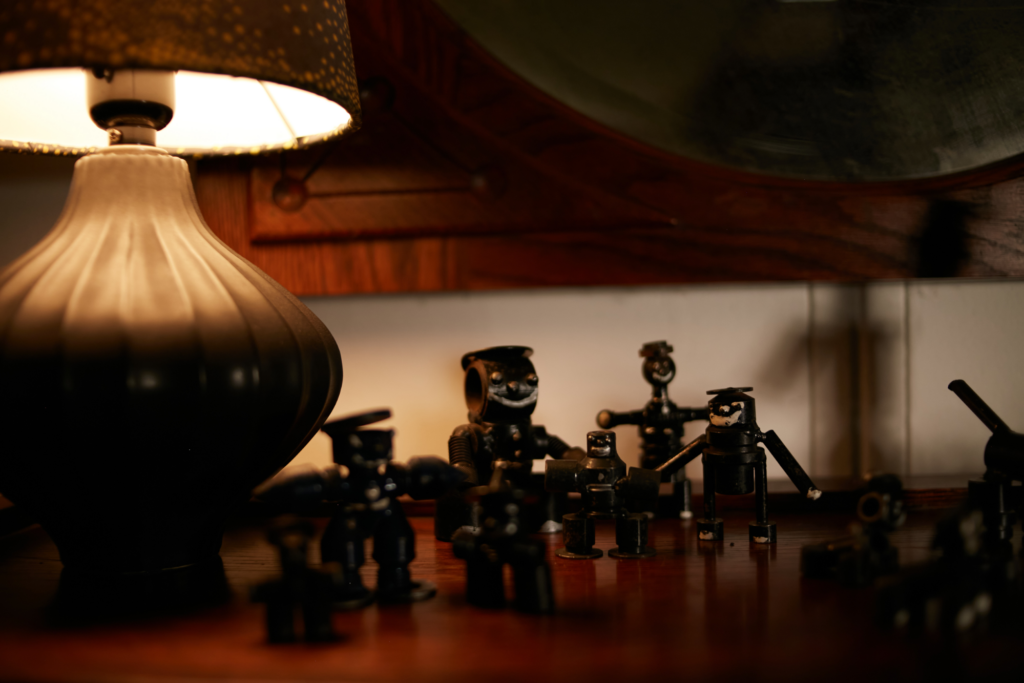
A collection of small figures made from plumbing parts welded together. He had bought one of them 30 years ago, then saw them again at an antique shop near his home upstate, and got to buy the whole collection.
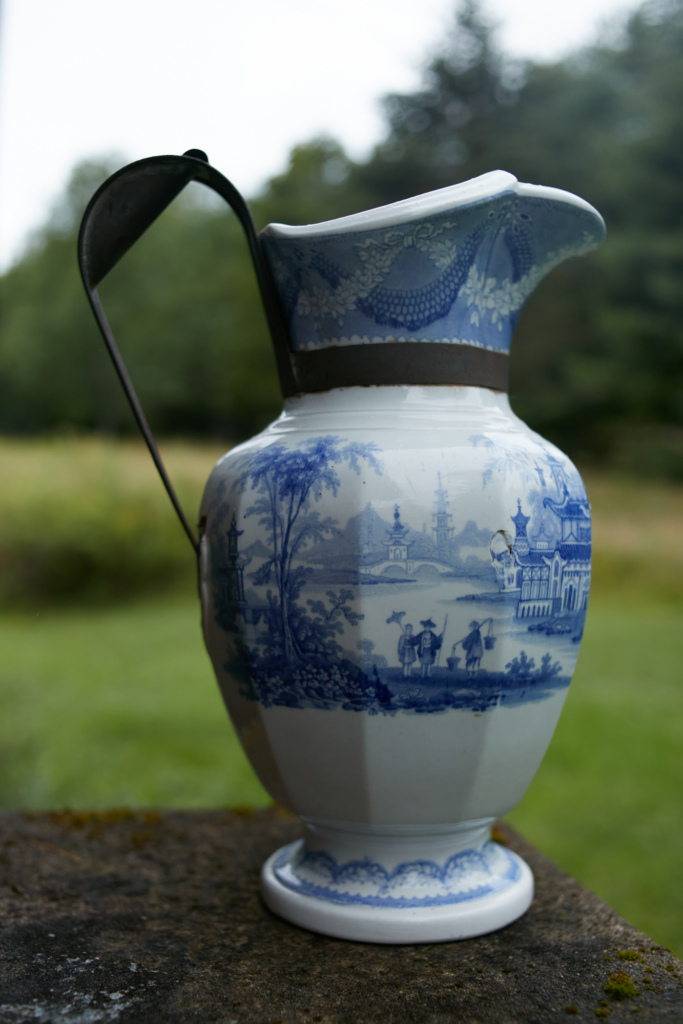
“The shape of the handle is not exactly what the original would’ve looked like. This one’s a bit exaggerated, but it was all about making do. And so, they made it work. So, they made this handle, and then at the very top, there’s a little bump that’s a thumb rest, and then the crescent shape that’s filled in with tin, that for your fingers; it’s just more comfortable than if it didn’t have it.”
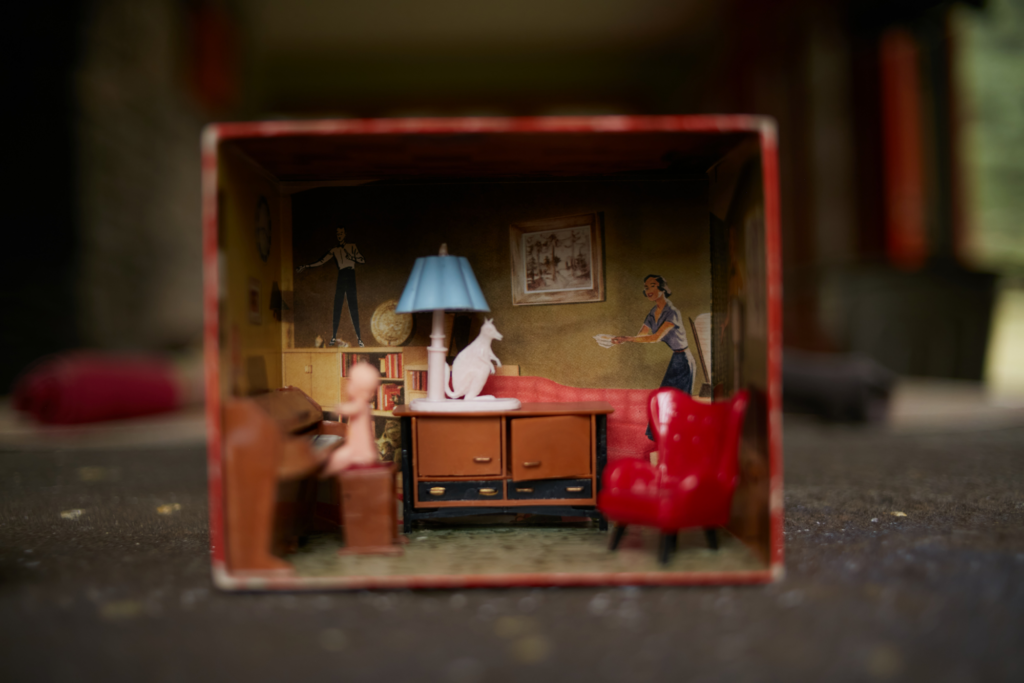
Nothing to do with make-dos. A small diorama Baseman made at Carnegie Mellon “when I should have been doing my homework. I found design magazines from the ‘50s and I would do little collages. So, the back area with the man and the woman in the little painting is all collaged together. And then I found dollhouse furniture of the same period, and I just made little dioramas for my own amusement.”
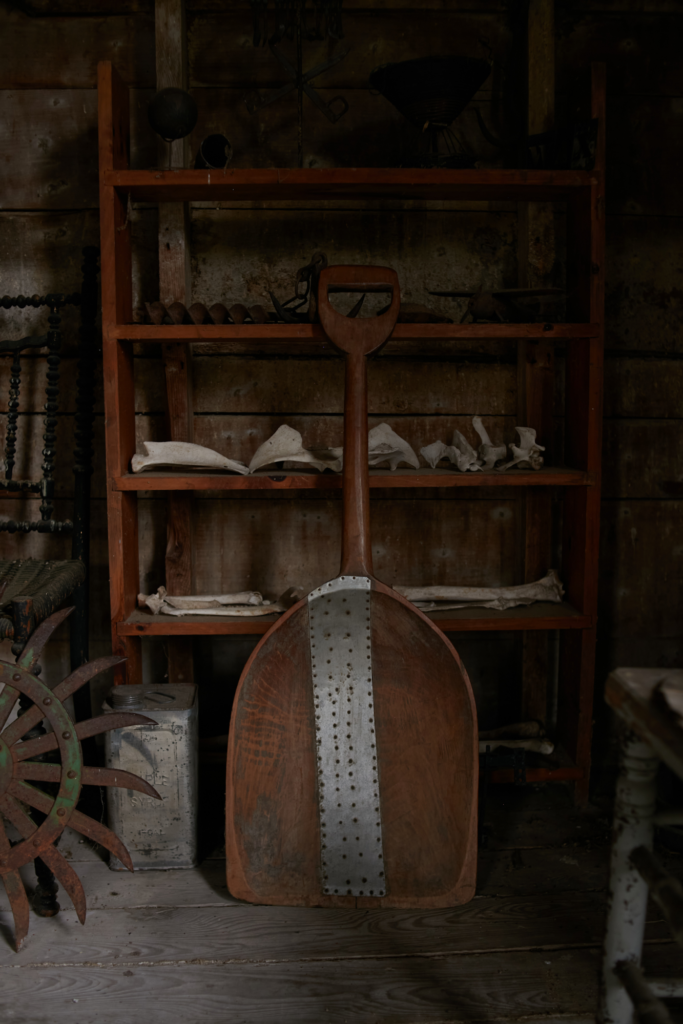
Primitive wooden shovel, circa 1870, the largest piece in his collection. It’s a grain shovel, carved from a single piece of wood (he believes it’s pine). “It was not unusual for large utilitarian pieces carved from a single piece of wood to crack. The farmer who repaired this piece was quite thorough. He used a large piece of metal and dozens of small nails to repair the split blade. A pair of iron straps were nailed to the back of the blade to help secure the break.”
Story by Stephen Treffinger / Photography by Harold Julian
Subscribe to TABLE Magazine‘s print edition.


